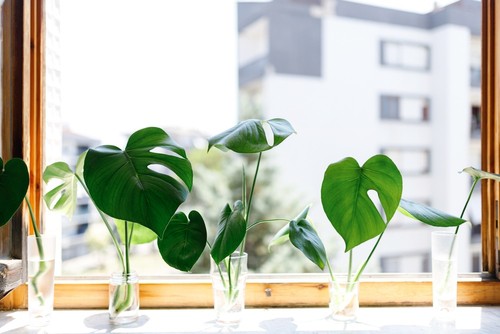Plants are essential for our survival. They provide us with oxygen, food, and many other resources. But have you ever wondered whether plants grow better in soil or water? This is a question that has been asked by many gardeners and plant enthusiasts. The answer is not straightforward, as it depends on various factors.
Understanding plant growth is crucial when it comes to deciding whether to grow plants in soil or water. Plants require sunlight, water, nutrients, and air to grow. While soil provides nutrients and support for roots, water provides a direct source of nutrients.
Plants grown in soil have a larger root system and are generally more stable, while plants grown in water have smaller roots and are more prone to falling over. When deciding whether to grow plants in soil or water, it is important to consider the specific needs of the plant species you want to grow.
Key Takeaways on Soil vs Water
- Plants grow differently in soil and water, and the method you choose depends on the specific needs of the plant species.
- Soil provides nutrients and support for roots, while water provides a direct source of nutrients.
- When deciding whether to grow plants in soil or water, it is important to consider the specific needs of the plant species you want to grow.
Learn more on how to improve your gardening skills from these other related posts:
- Can Plants Receive Adequate Light Through Frosted Glass?
- Deciphering the Optimal Growth Time for Plants – Day or Night?
- Do Plants Get Sun on Cloudy Days?
Understanding Plant Growth
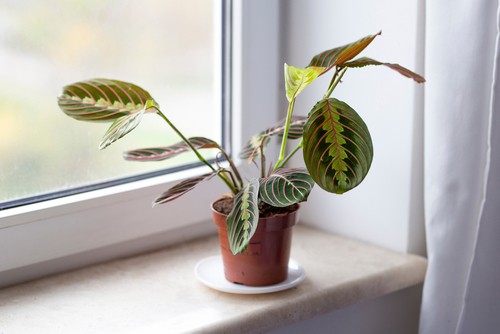
Plants are living organisms that require specific conditions to grow and thrive. Understanding the factors that contribute to plant growth is essential for gardeners, farmers, and anyone interested in cultivating healthy plants.
Factors Affecting Plant Growth
The growth of a plant is influenced by several factors, including:
- Light: Plants require light to carry out photosynthesis, the process by which they create energy from sunlight. The amount and quality of light a plant receives can significantly impact its growth.
- Water: Water is essential for plant growth, as it helps transport nutrients and minerals throughout the plant. Plants that receive too little or too much water can suffer from stunted growth or even die.
- Nutrients: Plants require specific nutrients, such as nitrogen, phosphorus, and potassium, to grow and thrive. The availability of these nutrients can significantly impact a plant’s growth.
- Soil: The type and quality of soil a plant is grown in can impact its growth. Soil that is too compact or nutrient-poor can stunt a plant’s growth or even kill it.
Photosynthesis and Growth
Photosynthesis is a critical process for plant growth. During photosynthesis, plants use sunlight to convert carbon dioxide and water into glucose, which they use as food. The amount and quality of light a plant receives can impact the rate of photosynthesis, which can, in turn, impact the plant’s growth.
Additionally, the availability of nutrients and water can impact a plant’s ability to carry out photosynthesis. A lack of nutrients or water can limit a plant’s ability to create glucose, which can stunt its growth.
Soil vs. Water
While many plants are grown in soil, some plants can be grown in water. Hydroponic systems, which allow plants to grow in a water-based solution, have become increasingly popular in recent years.
Plants grown in soil have access to a wide range of nutrients and minerals, which can help them grow and thrive. However, soil can also be prone to pests and diseases, which can impact plant growth.
Plants grown in water require specific nutrients and minerals to thrive, which must be added to the water. However, hydroponic systems can be more efficient than traditional soil-based systems, as they use less water and can produce higher yields.
Growing Plants in Soil
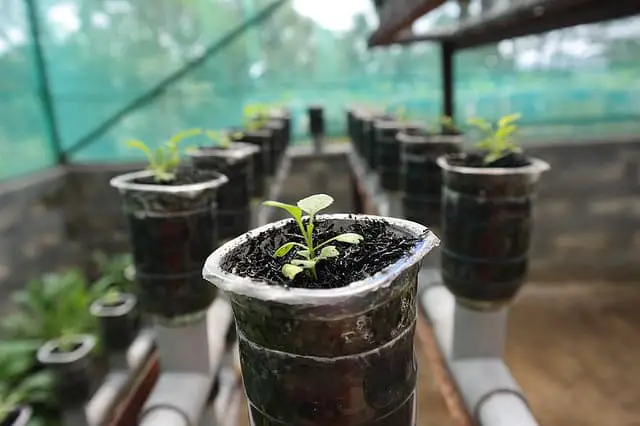
When it comes to growing plants, soil is the most common medium used. Soil provides plants with essential nutrients, water, and air. The roots of the plants anchor themselves in the soil, allowing them to absorb the necessary nutrients and water to grow.
One of the most significant advantages of growing plants in soil is that it provides a natural source of nutrients. Soil contains a variety of nutrients, including nitrogen, phosphorus, and potassium, which are essential for plant growth. These nutrients are released slowly, providing a steady supply of food for the plants.
Another advantage of growing plants in soil is that it helps to prevent disease. Soil is home to a variety of microorganisms that help to break down organic matter, making it easier for plants to absorb nutrients. These microorganisms also help to prevent the growth of harmful bacteria and fungi, which can cause disease in plants.
To ensure that plants grow well in soil, it is important to maintain good drainage. This can be achieved by adding organic matter such as compost or manure to the soil. Organic matter improves soil structure, allowing water to drain more easily.
In addition to good drainage, it is also important to provide plants with the necessary nutrients. This can be achieved by adding fertilizer to the soil. Fertilizer provides plants with the essential nutrients they need to grow, such as nitrogen, phosphorus, and potassium.
To maintain healthy soil, it is important to take care of it. This can be achieved by adding organic matter, such as compost or manure, to the soil on a regular basis. This helps to replenish the nutrients in the soil and maintain good soil structure.
Growing Plants in Water
Growing plants in water is a popular method for those who are limited on space or want to try something new. While not all plants can grow in water, many can thrive without soil. When growing plants in water, it is important to provide the right environment and nutrients to ensure their growth.
One of the benefits of growing plants in water is that it can save water. When using a regular jar, the water needs to be replaced every week. In hydroponics, the water is recirculated by adding nutrients to it. This can save water compared to watering plants in soil, where a lot of the water drains out into the ground while some of it is absorbed by the roots.
Another benefit of growing plants in water is that it can be a cleaner method than soil. Plants in water do not have soil-borne diseases, which can be a problem when growing plants in soil. This can be especially important for those who want to grow plants indoors.
When growing plants in water, it is important to ensure that there is enough oxygen in the water. This is because plants need oxygen to grow. Without enough oxygen, the plants can drown. One way to ensure that there is enough oxygen in the water is to use an air pump. This will help to circulate the water and provide oxygen to the roots.
Plant Needs

Plants require certain elements to grow and thrive. These include light, air, water, and nutrients. The amount of each element required varies depending on the type of plant and the environment it is growing in.
1. Light
Light is essential for photosynthesis, the process by which plants produce food. Plants require different levels of light intensity depending on the species. Some plants require direct sunlight, while others prefer partial or full shade.
2. Temperature
Temperature plays a vital role in plant growth. Different plants have different temperature requirements, and it is important to provide the right conditions for optimal growth. Extreme temperatures, either too hot or too cold, can be detrimental to plant growth.
3. Space
Plants need adequate space to grow and spread out their roots. The amount of space required varies depending on the type of plant. Some plants, such as succulents, can thrive in small containers, while others require larger pots or outdoor space.
4. Air
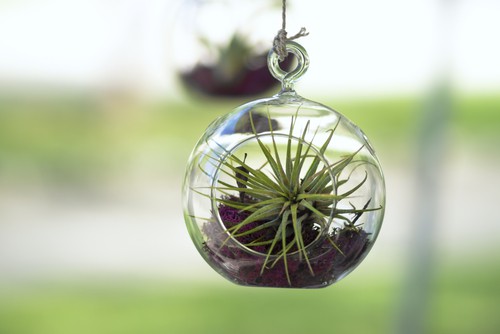
Plants require air to breathe, just like humans. The roots of plants need oxygen to survive, and the leaves require carbon dioxide for photosynthesis. Good air circulation is essential for plant growth, and stagnant air can lead to disease and pest problems.
5. Water
Water is essential for plant growth, and plants require different levels of moisture depending on the species. Some plants prefer drier conditions, while others require more water. Overwatering or underwatering can be detrimental to plant growth.
6. Nutrients
Plants require nutrients to grow and thrive. These include macronutrients such as nitrogen, phosphorus, and potassium, as well as micronutrients such as iron, zinc, and magnesium. The type and amount of nutrients required vary depending on the type of plant and the stage of growth.
Soil Types and Their Impact
Soil type plays a crucial role in determining how well plants will grow. Different types of soil have different characteristics that can either benefit or hinder plant growth. Here are some of the most common soil types and their impact on plant growth:
1. Clay Soil
Clay soil is composed of very fine particles, which makes it very dense and heavy. While clay soil is rich in nutrients, it can be difficult for plant roots to penetrate and grow. This can lead to poor drainage, which can cause waterlogging and root rot.
However, clay soil can be improved by adding organic matter such as compost or mulch, which can help break up the soil and improve drainage.
2. Sandy Soil
Sandy soil is composed of larger particles, which makes it very porous and well-draining. While sandy soil allows for good aeration and water drainage, it can also be less fertile and prone to nutrient leaching. To improve sandy soil, organic matter such as compost or mulch can be added to increase its nutrient content and water-holding capacity.
3. Moisture
Moisture is an important factor in plant growth, as it affects both nutrient uptake and root growth. While some plants prefer moist soil, others prefer drier soil. It is important to choose plants that are suited to the moisture level of the soil in which they will be grown.
4. Drainage
Good drainage is crucial for plant growth, as it prevents waterlogging and root rot. Soil that is too compacted or has poor drainage can be improved by adding organic matter such as compost or mulch, which can help break up the soil and improve drainage.
5. Mulch
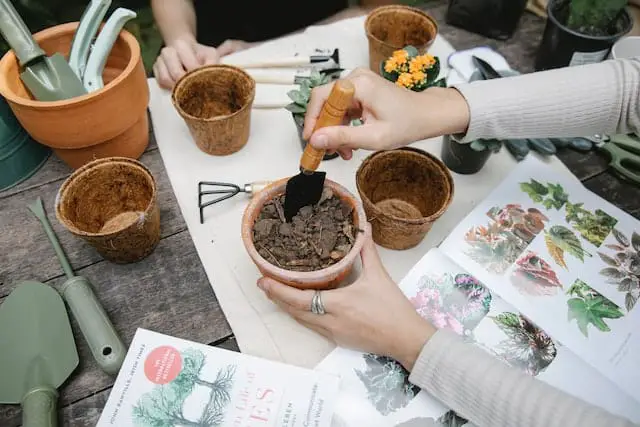
Mulch is a layer of organic material such as leaves, grass clippings, or wood chips that is spread over the soil surface. Mulch helps to retain moisture in the soil, suppress weeds, and regulate soil temperature. It also breaks down over time, adding nutrients to the soil.
Nutrient Requirements
Plants require a variety of nutrients to grow and thrive, and these nutrients can come from both soil and water. The most important nutrients for plants are macronutrients, which are needed in larger quantities. These include carbon, hydrogen, oxygen, nitrogen, phosphorus, potassium, calcium, magnesium, and sulfur.
The pH level of the soil or water can also affect the availability of these nutrients. Most plants prefer a slightly acidic soil with a pH level between 6.0 and 7.0. If the soil or water is too acidic or too alkaline, it can affect the plant’s ability to absorb nutrients.
Nitrogen is an essential macronutrient that is needed for plant growth and development. It is a major component of chlorophyll, which is necessary for photosynthesis. Plants can absorb nitrogen from the soil or water in the form of nitrate or ammonium ions.
Potassium is another important macronutrient that is involved in many plant processes, including water regulation, photosynthesis, and protein synthesis. It is often found in higher concentrations in soil than in water.
Phosphorus is necessary for root development and is involved in energy transfer within the plant. It is often found in soil in the form of phosphate ions.
Calcium and magnesium are important macronutrients that are involved in many processes within the plant, including cell division and the formation of cell walls. They are often found in higher concentrations in soil than in water.
Sulfur is needed for the production of amino acids and proteins within the plant. It is often found in soil in the form of sulfate ions.
While water can provide some of these essential nutrients, soil is often the primary source of nutrients for plants. However, the availability of nutrients in the soil can vary depending on factors such as pH, soil type, and the presence of other minerals.
Gardening Tools and Techniques
When it comes to gardening, having the right tools can make all the difference. Some essential tools for gardening include a hand trowel, a rake, a hoe, and pruning shears. A soaker hose is also a useful tool that can help to conserve water by delivering water directly to the roots of plants.
Another tool that can be helpful for watering plants is a watering wand. This tool allows for more precise watering, and can be especially useful for watering hanging plants or plants in hard-to-reach areas.
A rain gauge is also a useful tool for gardeners, as it can help to monitor how much rain has fallen and determine whether or not additional watering is necessary.
In addition to having the right tools, there are also a variety of techniques that can be used to help plants grow. One technique is to use raised beds, which can help to improve soil drainage and provide better growing conditions for plants. Another technique is to use compost or other organic materials to enrich the soil and provide nutrients for plants.
When it comes to watering plants, it’s important to water them deeply and infrequently rather than giving them frequent shallow waterings. This can help to encourage deeper root growth and make plants more resilient to drought conditions.
It’s also important to water plants in the morning or evening when temperatures are cooler, as this can help to reduce water loss due to evaporation.
Common Plants for Soil and Water Cultivation
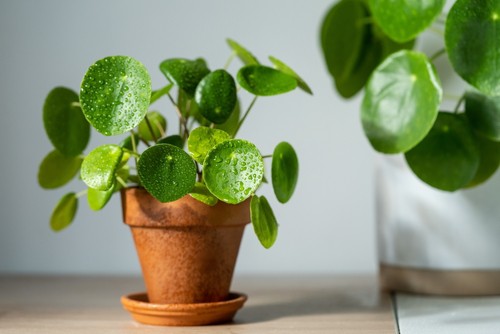
There are many plants that can be grown in both soil and water. Some of the most common plants for soil cultivation include vegetables like tomatoes, peppers, and cucumbers, as well as herbs like basil, parsley, and thyme. These plants thrive in soil because it provides them with the nutrients they need to grow and develop.
On the other hand, there are also many plants that can be grown in water. Lettuce, for example, is a popular plant for hydroponic cultivation because it grows quickly and can be harvested multiple times. Lucky bamboo, spider plants, pothos, and philodendron are also popular indoor plants that can be grown in water.
When it comes to choosing between soil and water cultivation, it’s important to consider the specific needs of the plant. Some plants, like tomatoes and peppers, require a lot of space and nutrients to grow, which makes soil cultivation a better option.
Other plants, like lettuce and herbs, can thrive in hydroponic systems because they don’t require as much space or nutrients.
Pests and Diseases
Plants grown in soil are more susceptible to pests and diseases than those grown in water. Soil-borne pests and diseases are those caused by pathogens that inoculate the host through the soil. Unhealthy soils can have issues with high levels of disease incidence and pests.
Soil-borne diseases are caused by various pathogens, including bacteria, fungi, and viruses. These pathogens can infect the roots, stems, leaves, or flowers of plants and cause serious damage. Common soil-borne diseases include root rot, damping-off, powdery mildew, and leaf spot.
In addition to diseases, soil-borne pests can also cause significant damage to plants. These pests include nematodes, root maggots, cutworms, and wireworms. Nematodes are microscopic worms that live in the soil and feed on plant roots, causing stunted growth and other symptoms. Root maggots, cutworms, and wireworms are all insect pests that can cause significant damage to plant roots, stems, and leaves.
Growing plants in water can help reduce the risk of soil-borne pests and diseases. However, it is important to note that water-borne diseases can also occur, especially if the water is not changed regularly or if the plants are overcrowded.
Water-borne diseases can be caused by various pathogens, including bacteria, fungi, and viruses. Common water-borne diseases include Pythium root rot, Fusarium wilt, and Phytophthora blight. To prevent pests and diseases, it is important to maintain healthy soil or water conditions.
This can be achieved by using proper soil or water management practices, such as adding organic matter to the soil, rotating crops, and avoiding overwatering. In addition, using disease-resistant plant varieties and practicing good sanitation can also help prevent the spread of pests and diseases.
Hydroponic Systems
Hydroponic systems are a method of growing plants without soil, instead using nutrient-rich water to deliver the necessary nutrients to the roots. This system allows for greater control over the growing environment, including temperature, light, and space.
One popular hydroponic system is the Deep Water Culture (DWC) system. In this system, plants are suspended in net pots above a nutrient-rich solution. An air pump provides oxygen to the solution, which helps to prevent root rot. DWC systems are easy to set up and maintain, making them a popular choice for beginners.
Another popular hydroponic system is the Nutrient Film Technique (NFT) system. In this system, a thin film of nutrient-rich water flows over the roots of the plants, providing them with the necessary nutrients. NFT systems are ideal for growing small plants like lettuce and herbs, but may not be suitable for larger plants.
Temperature and light are critical factors in hydroponic systems. The ideal temperature for most plants is between 68-72°F (20-22°C). High temperatures can cause root rot, while low temperatures can slow plant growth. Light is also important, and most hydroponic systems require supplemental lighting to ensure plants receive the necessary amount of light.
Space is another important consideration when using hydroponic systems. While these systems can be set up in a small space, they typically require more space than traditional soil-based gardens due to the need for equipment like pumps and reservoirs.
Maintenance is also an important factor in hydroponic systems. The nutrient solution must be monitored and adjusted regularly to ensure the plants receive the necessary nutrients. The pH level of the water must also be monitored and adjusted as needed.
Additionally, the equipment used in hydroponic systems must be cleaned regularly to prevent the buildup of algae and other contaminants.
Benefits and Drawbacks
Growing plants in soil or water has its own benefits and drawbacks. Here are some of the advantages and disadvantages of each method:
Soil

Benefits
- Nutrient-rich: Soil is a natural source of nutrients, and it contains all the essential minerals and elements that plants need to grow.
- Easy to maintain: Soil is easy to maintain and does not require much attention once the plants are established.
- Cost-effective: Soil is relatively inexpensive and readily available, making it a cost-effective option for growing plants.
- Natural pest control: Soil helps to control pests and diseases naturally, as it contains beneficial microorganisms that help to keep the soil healthy.
Drawbacks
- Weeds: Soil contains weed seeds that can grow and compete with plants for nutrients and water.
- Limited space: Soil requires a lot of space, making it difficult to grow plants in small areas or indoors.
- Greenhouse investment: Growing plants in soil in a greenhouse requires a significant investment in infrastructure, including heating, cooling, and ventilation systems.
- Yield: Plants grown in soil may produce lower yields compared to hydroponic systems.
Water
Benefits
- Water efficiency: Hydroponic systems use up to 90% less water than soil-based systems, making them a more water-efficient option.
- Space-saving: Hydroponic systems require less space than soil-based systems, making them ideal for small indoor spaces.
- No weeds: Hydroponic systems do not contain weed seeds, eliminating the need for weed control.
- High yields: Hydroponic systems can produce higher yields compared to soil-based systems.
Drawbacks
- Investment: Hydroponic systems require a significant investment in infrastructure, including pumps, filters, and nutrient solutions.
- Maintenance: Hydroponic systems require regular monitoring and maintenance to ensure proper nutrient levels and pH balance.
- Limited nutrient options: Plants grown in hydroponic systems are limited to the nutrients provided in the nutrient solution.
- Susceptible to power outages: Hydroponic systems rely on electricity to circulate water, making them susceptible to power outages.
Conclusion
Plants generally grow better in soil than in water. While some plants can grow in water alone, they still require nutrients and minerals that are typically found in soil.
Soil provides a stable environment for plants, allowing them to anchor their roots and absorb water and nutrients. Additionally, soil contains microorganisms that help break down organic matter and release nutrients, which can be absorbed by plants.
On the other hand, growing plants in water can be more challenging as it requires a carefully balanced nutrient solution and aeration system. Without proper aeration, plant roots can become waterlogged and suffocate.
It’s important to note that there are certain plants, such as aquatic plants, that can only survive and thrive in water. However, these plants have adapted to their unique environment and have different requirements than plants that grow in soil.
Overall, while growing plants in water may seem like a convenient and space-saving option, soil remains the most reliable and effective medium for plant growth.
Frequently Asked Questions
What are the advantages of growing plants in hydroponics?
Hydroponics is a method of growing plants in water without soil. One of the main advantages of hydroponics is that it uses less water than traditional soil-based farming. Hydroponics also allows for more efficient nutrient uptake by the plants, which can result in faster growth and higher yields.
Additionally, hydroponics can be used to grow plants in areas where soil quality is poor or where space is limited.
How does the nutrient uptake of plants differ in hydroponics compared to soil?
In hydroponics, nutrients are delivered directly to the plant roots through a nutrient solution. This allows for more efficient nutrient uptake compared to soil-based farming, where nutrients may be less available or more difficult for plants to absorb.
Additionally, in hydroponics, the nutrient solution can be carefully controlled and adjusted to meet the specific needs of each plant.
Can plants survive without soil?
Yes, plants can survive without soil. Hydroponics is one example of a method for growing plants without soil. Other methods include aeroponics, where plants are grown in a mist of nutrient solution, and aquaponics, where plants are grown in water that is fed by fish waste.
What factors affect plant growth in hydroponics?
Several factors can affect plant growth in hydroponics, including nutrient levels, pH balance, water quality, temperature, and lighting. It is important to carefully monitor and adjust these factors to ensure optimal plant growth and health.
What are the benefits of growing plants in soil?
Growing plants in soil can provide a range of benefits, including improved soil health, increased biodiversity, and the ability to grow a wider range of plant species.
Additionally, soil-based farming can be more cost-effective than hydroponics, as it does not require expensive equipment or specialized knowledge.
How does soil quality affect plant growth?
Soil quality can have a significant impact on plant growth. Healthy soil contains a range of nutrients and microorganisms that support plant growth and health.
Poor soil quality, on the other hand, can lead to stunted growth, nutrient deficiencies, and other issues. It is important to maintain healthy soil through practices such as crop rotation, composting, and avoiding the use of chemical fertilizers and pesticides.

Hey, I’m Lisa and I’ve been an avid gardener for over 30 years. I love writing, talking and living in the garden! Feel free to connect with me on my socials below

